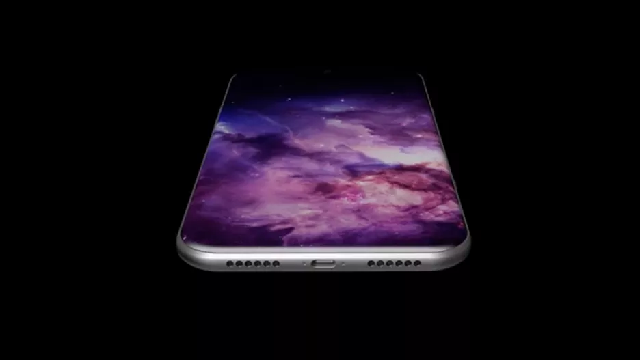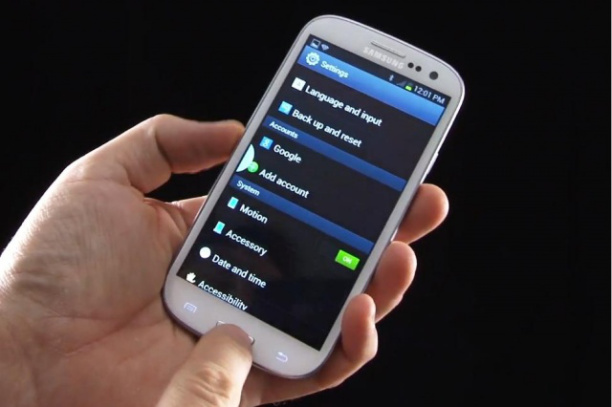The company plans to introduce three new iPhone models later this year which may include a considerably larger version of the iPhone X — the iPhone X Plus, perhaps — as well as a significantly less expensive version. It’s worth noting that price hasn’t been a major obstacle for the premium flagship so far; though it’s the priciest iPhone ever at $999, £999 or AU$1,579, the iPhone X was the best-selling phone for the first three months of 2018, followed by the iPhone 8 and 8 Plus. Of course, a less expensive version would almost certainly broaden its addressable market.
Six plus months after the iPhone X’s release, however, the phone has lost a bit of its initial sheen.
In addition to refining the designs and adding in some new features, Apple is likely to deliver the annual enhancements we’ve come to expect — new build materials and colors, a bump in processing speeds, higher screen resolution and tweaks to extend battery life.
Meanwhile, the Android world continues to react and respond to the iPhone X. At its I/O event in May, Google showed off the new gesture-based interface at the center of its new Android P operating system. (For what it’s worth, Google says it started working on the new navigation before the debut of the iPhone X.) And then there’s Samsung’s AR emoji and Intelligent Scan features — lesser versions of the iPhone’s Animoji, Memoji and Face ID that don’t quite measure up to the originals.
OnePlus, Asus, LG, Huawei and others have announced or are rumored to be working on phones that ape the distinctive notch design that Apple popularized (but with which the Essential Phone was first to market). And Huawei has already iterated on the notch concept with its P20, which gives you the option to toggle it on and off.
With the Android world making strides in camera technology and other fronts, Apple can’t rest on its laurels. The trillion dollar question is whether the company can keep its amazing winning streak alive even as the overall market for handsets slows.
Though we’re likely two months out from seeing the next iPhone (and don’t have any proof as to what its features will be), the rumor mill is already creating a compelling picture of what’s to come. We’ll continue to update this page with news and leaks as we begin our countdown to the 2018 Apple iPhone X, iPhone XS, iPhone X2, iPhone 11 or whatever the next generation may be called.
Likely: September 2018 announcement and release date
Apple hasn’t officially announced when we’ll see the next phone. But the timing for this annual ritual has now hardened into a reliable tradition. After launching the first few iPhones in June, Apple shifted to the early September time frame with the iPhone 5 in 2012 and, apart from the off-cycle iPhone SE, has stuck to it since. No reason to expect this to change in 2018.
Rumor: It could be called the iPhone 11, iPhone X Plus, or the iPhone X2 — but probably not the iPhone 9
According to some analysts, Apple may revert to its “S” series nomenclature, giving us an iPhone XS (perhaps a fitting homophone to “excess”) and XS Plus or perhaps the numeric equivalent, with the X2.
That noted, there are some very rich design opportunities with the two ones of an iPhone 11. And then there’s the possibility of Apple doing away with numbers entirely — at least for the lower-end, non-X model — similar to the company’s approach with its entry-level tablet, which is now just the “new iPad” every year.
Regardless, we do believe that Apple effectively killed the iPhone 9 when it brought out the iPhone X alongside the iPhone 8 and 8 Plus in September.
What’s the deal with OLED or LCD for the next iPhone X?
Multiple sources believe that Apple will include at least one lower-cost LCD screen iPhone in the 2018 lineup, but rumors disagree on which phones will have OLED screens and which will use LCD.
The tech blog echo chamber (Patently Apple to BusinessKorea to Patently Apple) is pointing to an LCD 2018 iPhone. They’ve suggested that Apple will revert the next iPhone X to have an LCD screen, slashing the price tag and improving the availability of the current OLED model. More specifically, the BusinessKorea report predicts that a forthcoming 6.1-inch iPhone will have a MLCD+ display, similar to the new LG G7 ThinQ.
The Wall Street Journal similarly reports that the less-expensive LCD iPhone is expected to sell faster than a pricy OLED one. It suggests that Apple will come out with two OLED iPhones and one iPhone with an LCD screen in the fall, but there will probably be a higher volume of LCD iPhones produced in anticipation of higher sales.
Apple analyst Ming-Chi Kuo backed up this claim in early July when he predicted the following specs for the 2018 iPhones: a 5.8-inch OLED iPhone, a 6.5-inch OLED iPhone Plus and a 6.1-inch affordable LCD iPhone.
Kuo speculates that the company’s 2018 iPhones will be based on the design of the today’s full-screen flagship. According to Jusy Hong, an analyst at Information Handling Services, all three new models (including the LCD one) could be expected to look similar to the iPhone X
One of the new 2018 iPhone models could have a rear-facing camera with a triple-lens array, according to the Chinese language Economic Daily News (as reported by MacRumors). The article suggests that such a camera would enhance the iPhone’s rear zoom capacity and improve picture quality in dim light environments. Note that Huawei’s new P20 Pro comes equipped with a triple-lens rear-facing camera.
The rumor has gained more ground — the highest-end iPhone X Plus model for 2018 could be the phone to get the three vertically stacked lenses, according to Forbes.
A conflicting report suggested we wouldn’t see the three camera lenses until 2019, and that the combination could create a depth map that’d be used for AR, an area that Apple is pursuing aggressively.
Rumor: The iPhone SE X (LOL)
There has been a recent proliferation of rumors about a 2018 release for the long-awaited followup to the iPhone SE. New reports suggest that Apple may be developing a hybrid of sorts, merging the iPhone SE’s 4-inch-screen form-factor with the iPhone X’s TrueDepth camera system.
As reported by 9to5Mac.com, case maker Olixar has produced a prototype screen protector for a smaller iPhone with the slim bezels and notch found on the iPhone X. And this comes in the wake of purportedly leaked CAD drawings of a device called the iPhone SE2 published by TigerMobiles.com and Onleaks.
Rumor: A bigger iPhone
Bloomberg reports that Apple has developed two new supersize iPhones: a 6.5-inch OLED model — a “Plus” version of the iPhone X, which would be the biggest iPhone ever — and a 6.1-inch LCD version. There is also talk that Apple might drop the current 5.8-inch size for the iPhone X, based on its reportedly diminishing orders for OLED components. Previously, former Apple analyst Ming-Chi Kuo speculated that the company would release three models in 2018 based on the design of the today’s full-screen flagship.
A less expensive iPhone X seems like a no-brainer — but is there room for a bigger version in Apple’s 2018 lineup?
Rumor: A cheaper iPhone
Kuo predicts that Apple may launch a single-SIM version that costs between $550 and $650 (which converts to about £390-£460 or AU$710-AU$840) and another dual-SIM model, priced between $650 to $750 (about £460-£530 or AU$840-AU$970). And sure, in order to make a 6.1-inch model that’s more affordable than anything in the current lineup, Apple could omit some of the pricier componentsincluding Face ID, the OLED display, 3D Touch and the second rear camera. But when it comes to a $550 iPhone X — we have our doubts.
Rumor: A pricier iPhone
Of course, every rumor has its equal and opposite rumor. Investment analysts at UBS have predicted that Apple’s flagship iPhone for 2018 will cost $1,100 (which converts to about £770 or AU$1,415). That’s about $100 over the iPhone X’s starting $999 price tag, but it makes sense if that model has a larger screen than the current model.
Rumor: Face ID proliferates, goes horizontal
Ming-Chi Kuo predicts that Apple will bring its TrueDepth camera system to the three new phones coming in 2018. With facial recognition technology fully deployed across the 2018 iPhone lineup, Apple could omit the fingerprint sensor from the next batch of phones, according to Kuo, which might mean the end of the line for Touch ID.
In addition, Face ID may also make its way into the next batch of iPads rumored for a WWDC announcement later this year. Related to this is a report from multiple sources (Mac Okatara, MacRumors and Bloomberg) that the next version of Face ID will be able to unlock phones while in landscape position — the default orientation for most iPad users.
Rumor: iPhone support for the Apple Pencil or iPen
And OLED iPhone due out in 2018 will support an “iPen” device, according to investment firm Rosenblatt Securities. Of course, this rumor — an iPhone that supports the Apple Pencil — has been around since the stylus first debuted in 2015. And yet the new 2018 iPad’s addition of Apple Pencil functionality gives this old chestnut some new life.
Long-shot rumor: Virtual fingerprint scanner
While Face ID has largely mitigated the need for a fingerprint scanner, the buzz around Touch ID embedded in the display — a trusty pillar of the rumor cycle since the run-up to the iPhone 8 — persists. And for good reason: we’ve seen the technology implemented. It’s called Clear ID and it’s featured in the Vivo X20 Plus UD that went on sale in China in January. But since reverting to any sort of fingerprint sensor would be an “admission” that Face ID isn’t the future, we think its return is a real long shot.












